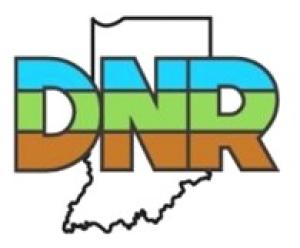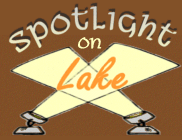
2024-25 Hunting & Trapping Guide now available
The 2024-25 Hunting & Trapping Guide features teal hunting tips and tricks, interviews with some of Indiana’s waterfowl hunters, plus a duck-stuffed jalapeño popper recipe from our grassland gamebird biologist. Grab your copy to read the latest information and regulations for all hunting and trapping.

Pick up a copy at a nearby Fish & Wildlife Area, your local license retailer, and the Natural Resources Building during the State Fair or view the guide online. While you’re at it, purchase your fall hunting license.

DNR restricts moving live wild deer from Chronic Wasting Disease Positive Areas
As a result of Indiana’s positive detection of chronic wasting disease (CWD) in LaGrange County this April, Indiana DNR has restricted moving deer from any CWD Positive Area for rehabilitation purposes.
With the change, an individual who finds an orphaned, sick, or injured deer in a CWD Positive Area may only surrender the deer to a DNR-permitted wild animal rehabilitator that is located within a CWD Positive Area. This restriction is to help minimize the spread of CWD to new parts of the state, as deer can carry this disease without appearing sick.
Currently, there is one CWD Positive Area in Indiana. It includes LaGrange, Steuben, Noble, and DeKalb counties. While no CWD positive deer have been documented in Steuben, Noble, or DeKalb counties, those counties are considered part of the CWD Positive Area because of their proximity to where the state’s first CWD-positive deer was found in LaGrange County.
During their first few weeks of life, fawns often hide by themselves and stay motionless to avoid predators while the mother is looking for food. If you find a fawn alone, you can help it by letting it be, giving it space, and leaving the area. Its mother is likely nearby.

Fish and wildlife fun at the State Fair
The State Fair is right around the corner, and DNR has plenty of engaging opportunities available for all ages every day. Stop by the Natural Resources Building to speak with a biologist, learn about wildlife health, join a native plant tour, or watch bowhunting and duck decoy set-up demonstrations.
Hoping to catch some sun and fish on your trip to the fair? Kids ages 5-17 can enjoy free fishing every Friday, Saturday, and Sunday from 10 a.m. – 1 p.m. and 3 – 6 p.m. at the DNR Fishin’ Pond.
Looking for some shade? Don’t forget to visit Pathway to Water Quality, where you can learn about our state’s watersheds and the ways you can protect our soil and water resources.
DNR has events for everyone at the fair. View our events calendar for all events and schedules.

Indiana lakes stocked with striped and hybrid striped bass
East Fork State Fish Hatchery recently completed annual striped bass and hybrid striped bass stockings. More than 78,000 striped bass fingerlings and 146,000 hybrid striped bass fingerlings were added to 12 lakes around the state. The stocked fish averaged 1–2 inches in length and will reach a catchable size of 14 inches in two years.
Learn more about striped and hybrid striped bass fishing on our webpage and be sure to purchase your fishing license for the summer and fall.
Celebrate National Shooting Sports Month: Visit a shooting range near you
August is the perfect time to practice your shooting skills. Not only is it in the midst of the Paris 2024 Olympics, but it’s also National Shooting Sports Month. You can watch Olympic shooting sports on TV and join the fun at your local DNR shooting range. Depending on the range you visit, you can practice archery, rifle, shotgun, handgun, trap, and skeet. Watch our new shooting range video to view our facilities and find more information about DNR shooting ranges on our Public Shooting Ranges web page.
![]()
Public comments and public hearings on proposed rule changes
Public comment is open to the Indiana Natural Resources Commission (NRC) regarding proposed changes to the state’s river otter trapping and deer hunting rules. Public comments can be submitted at IN.gov/nrc/rules/rulemaking-docket by locating the “Submit Comments Here” link in the Rulemaking Docket for the River Otter Trapping Rule and Deer Hunting Amendment Proposal. Comments can also be mailed to:
Natural Resources Commission
Indiana Government Center North
100 North Senate Ave., Room N103
Indianapolis, IN 46204
The deadline for submitting public comments is Aug. 23. Public hearings are also being held on Aug. 26 as follows:
River Otter Trapping Rule Changes: Aug. 26, 4:30-6 p.m. ET, Atterbury Fish & Wildlife Area, in-person and online
Deer Hunting Rule Changes: Aug. 26, 6-7:30 p.m. ET, Atterbury Fish & Wildlife Area, in-person and online
For more information on the proposed rule changes and the links to attend the online public hearings, visit our Rule & Regulation Changes webpage.

Report turkey brood observations until Aug. 31
DNR’s turkey brood survey is at the halfway point. So far, we’ve received 1,908 observations. To reach our goal of 3,000, we need your support.
If you’ve already reported an observation this year, thank you, and please keep reporting. Haven’t reported yet? Reporting observations of turkey hens with and without poults (young turkeys) provides meaningful data for DNR to track and manage populations around the state.
DNR appreciates your help supporting wild turkey populations in Indiana.

Photo by Seth Schulte, via Unsplash.
The results are in: DNR’s Midwest Walleye Challenge
Drumroll, please. From March 30-June 30, DNR participated in the Midwest Walleye Challenge, a virtual fishing tournament for walleye, sauger, and saugeye, created through a collaboration between Indiana DNR and MyCatch by Angler’s Atlas. This partnership provided shared data that assisted with walleye, sauger, and saugeye management while giving anglers the opportunity to win cash and sponsor-donated prizes through their participation.
During the challenge, anglers reported 212 fishing trips and 663 hours of fishing. Anglers caught 140 walleye, the largest measuring 26.5 inches in length.
Feel like you missed out on the fun? It’s not too late. Watch for an announcement later this fall for another Midwest Walleye Challenge. To learn more about walleye fishing, visit the walleye fishing webpage.

Adopt-A-Ramp volunteer at Laughery Creek Public Access Site.
Volunteer with Adopt-A-Ramp
Looking for a flexible volunteer opportunity that benefits wildlife health, outdoor recreation, and your community? With approximately 400 public access sites throughout the state, DNR’s Adopt-A-Ramp volunteer program is a great fit for individuals and groups of any size. Volunteers visit their sites at least three times a year to clean the area, and the more hands there are, the merrier.
You can create a volunteer profile on the Division of Fish & Wildlife volunteer page. After that, you can sign up for the Adopt-A-Ramp opportunity directly. DFW staff will follow up via email to help you locate an adoptable ramp and connect you to resources.
Have questions before signing up? Email DNRPublicAccess@dnr.IN.gov or visit the Public Access Site webpage to learn more.

It’s natural: Learn about summer fish die-offs
Rising temperatures mean that you may see a natural fish die-off in the summer months. There are various reasons you may spot one:
- Increased water temperatures cause increased stress on fish, due to the drop in dissolved oxygen in the water. When dissolved oxygen levels are too low, many fish cannot survive. Rapid temperature fluctuations can also cause fish to become more susceptible to infections.
- Stress from overpopulation and increased competition for resources, such as dissolved oxygen, can result in increased fish deaths.
While fish die-offs are natural in the summer, you can still report them at on.IN.gov/sickwildlife. Find resources for managing your own private ponds on our website.

Photo by Jamez Picard, via Unsplash.
Wildlife viewers wanted: Participate in a study with DNR
If you enjoy viewing wildlife around your home as well as taking steps to prevent wildlife-related damage to your property, DNR needs your help. We’re tracking wildlife sightings around Hoosiers’ homes and studying the economic impact of wildlife in our state.
Each randomly selected volunteer will receive a logbook they can use to report wildlife encounters along with related activities—like repairing damage—and expenditures. In exchange, you may be eligible for a cash reward. If you are interested in helping us improve management of Indiana’s diverse wildlife resources, click on the button below to complete the sign-up form.

Crawfish frog conservation hops along at Angel Mounds
This spring, DNR herpetologists began a multi-year project to reestablish state-endangered crawfish frogs at Angel Mounds State Historic Site in Evansville. In March and April, they took crawfish frog egg masses from Greene County and relocated them to Angel Mounds to reestablish the frogs on site.
Those eggs hatched two weeks later, and now the tadpoles are starting to metamorphose. They’ll start to lose their tails and grow hind legs as they continue to become young frogs, leaving the pond to look for crayfish burrows to settle in. In 2026, the frogs will reach sexual maturity and will return to Angel Mounds to mate. DNR will continue to introduce eggs to supplement the Angel Mounds population each spring.
This project was made possible by funds from the Indiana Nongame Wildlife Fund. Learn more about the fund and donate online.
Recent news releases
Crawfish Frogs Reintroduced at Angel Mounds
Public input sought on proposed deer hunting and otter trapping rule changes
DNR restricts moving fawns from Chronic Wasting Disease Positive Areas
DNR accepting applications for grants to support developing shooting ranges
Striped and hybrid striped bass stocked in Indiana lakes
Report your observations of wild turkey hens and their young to DNR

State Fair events
- Fishin’ For Kids ages 5-17
- Ask a Fisheries Biologist
- Rods & Reels Demo
- Bowfishing Demo
- Fish, Wildlife, and One Health
- Deer Hunting Q&A
- Learn to Plant Native Tours
- Planting Native in your Community
- Accessing Public Lands
- Choose Your Volunteer Adventure
- Waterfowl Decoy Demonstration: Featuring Indiana Ducks Unlimited
Upcoming events
- Aug. 1 – Project WET and Project WILD Workshop, Winona Lake, Kosciusko County
- Aug. 2 – Dove Banding, Goose Pond FWA
- Aug. 2 – DEADLINE: Art & Photo Contest for Durable License Cards
- Aug. 3 – Sandhill Migration Games, Goose Pond FWA
- Aug. 7 – Project WET and Project WILD Workshop, Albion, Noble County
- Aug. 10 – Project WET Workshop with Illinois-Indiana Sea Grant, Chicago, IL
- Aug. 10 – Intro to Squirrel Hunting for Women, Atterbury FWA
- Sept. 2 – Guided hike: Shrader-Weaver Nature Preserve, Fayette County
- Sept. 9 – Flying WILD Workshop, Zionsville, Boone County
More
- Buy a license
- Hunting information
- Where to Hunt
- Fishing information
- Where to Fish
- Fish & Wildlife properties

The Indiana Natural Resources Foundation celebrates and preserves Indiana’s natural legacy by raising funds to support the Indiana Department of Natural Resources (DNR) and its programs. Together, we have helped expand public lands, restore wildlife habitat, and create outdoor educational and recreational opportunities for Hoosiers.
About Fish and Wildlife Management in Indiana
Fish and wildlife management and public access are funded by fishing and hunting license revenue and also through the Wildlife and Sport Fish Restoration Programs administered by the U.S. Fish & Wildlife Service. These programs collect excise taxes on sporting arms and ammunition, archery equipment, fishing equipment, and motor boat fuels. The money is distributed among state fish and wildlife agencies based on land size and the number of licensed anglers and hunters in each state. Find out more information about fish and wildlife management in Indiana at Wildlife.IN.gov.



